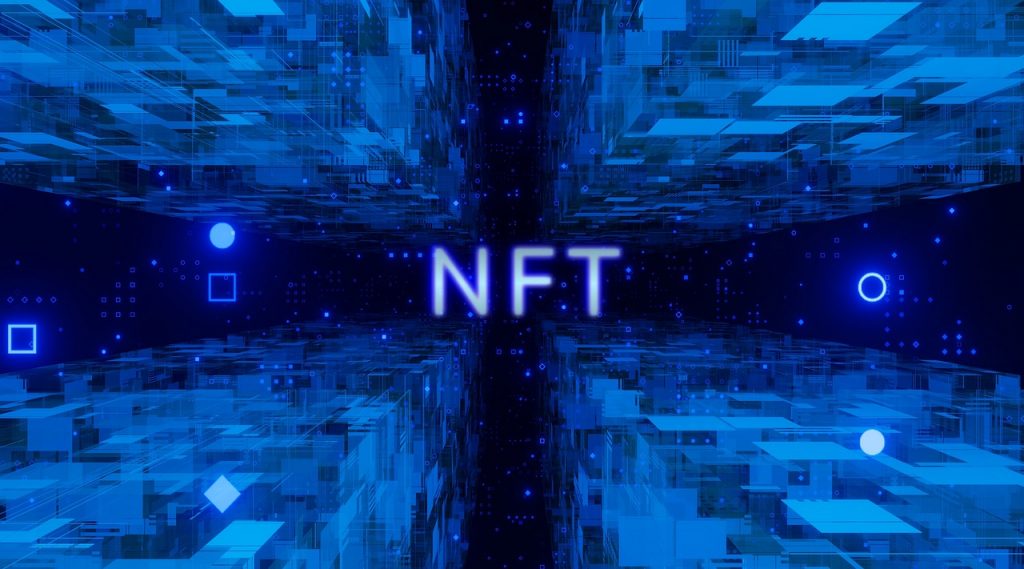Lucas Andrew
A Blockchain consultant.
NFT is a digital asset, these NFTs may be music, art, photos, videos, metaverse, cards, or any digital collectibles. NFT is at...

Image Credits: pixabay
NFT is a digital asset, these NFTs may be music, art, photos, videos, metaverse, cards, or any digital collectibles. NFT is at its peak, with most youngsters creating NFTs in various fields. The non-fungible token is minted on any blockchain network, and the minted NFT holds specific metadata, making the NFT unique. The first NFT was minted on the Ethereum blockchain network. These non-fungible tokens are stored on the minted blockchain network, and these NFTs cannot be sold in parts like Fungible tokens.
The NFT marketplace is the digital space where the NFTs are listed for sale in exchange for cryptos. The creators of the NFT list their NFT on these platforms either in the auction or open bid, where the users buy NFTs in which they are interested. In the past two years, several NFT marketplaces have evolved because young users have entered the crypto world, and most youngsters all over the globe have acquired knowledge of crypto and NFT. This results in developing and launching multiple NFT marketplaces for various concepts on different blockchain networks. Ethereum, Binance Smart Chain, Solana, Cardano, and Polygon are dominant blockchain networks where most NFT marketplaces are developed. Open Sea is the famous NFT marketplace with the most active users, and it is the only marketplace with the most number of the marketplace.
The NFT marketplace is either developed from scratch or a white-label NFT Marketplace. An NFT marketplace from scratch will present your platform as unique to the users with all the unique features, including the marketplace functionalities. In the case of a white-label NFT marketplace, it is a 100% customizable platform with all its end-to-end functionalities of an NFT marketplace. Multiple features can be added to the NFT marketplace, even in the case of white labels, and most of them choose the white label NFT marketplace as it can be developed within less time and with minimum cost. The sample development codes are related to blockchain.
The NFT Marketplace is created with the below-mentioned workflow
In the case of the white-label NFT marketplace, the developers work on the available script used to develop the other NFT marketplace.
Once the creator creates the digital asset, whether music, image, art, or anything else, it has to be minted as an NFT to list on the marketplace. The user mints the digital asset as an NFT and in any marketplaces with the pre-programmed smart contracts. The minted NFT will be stored in the blockchain network.
#Minting
A sample code on minting an NFT in the marketplace. A main function for minting digital assets as non-fungible tokens.
function Minting() {
let selectedOption;
const [ipfs, setIpfs] = useState([])
const [name, setName] = useState([])
const [description, setDescription] = useState([])
const [ipfsLink, setipfsLink] = useState([])
function mintToken() {
console.log(“Minting token…”);
console.log(“Form values: “, name, description, ipfsLink);
addNFT(name, description, getImage(ipfsLink), ipfsLink, getRandomInt(999999));
}
function handleChange(selectedOption) {
setIpfs(selectedOption.value);
console.log(`Option selected:`, selectedOption);
}
The created NFT will be listed on the marketplace where the users can buy the NFTs in exchange for NFTs. The creator of the NFT can list the NFT with the royalty percentage, and the creator gets a fixed percentage for every NFT sale to the next person.
#Transaction
import { useContext } from “preact/hooks”;
import { TransactionContext } from “../components/TransactionContext”;
export const useTransactions = () => {
const { artifacts, setArtifacts } = useContext(TransactionContext);
return {
artifacts,
setArtifacts,
addArtifact: (a) => setArtifacts([…artifacts, a]),
removeArtifact: (a) => setArtifacts(artifacts.filter((b) => b.id !== a.id)),
isArtifactPending: (a) => artifacts.map((b) => b.id).includes(a.id),
};
};
The NFT is listed and bought by the user of the NFT marketplace. The minted NFT will be transferred from the seller’s wallet to the buyer’s. Most of the marketplace has third-party wallets like Metamask, Trust Wallet, and more where the NFT will be stored and transferred. Check out our How to build an NFT Marketplace blog for detailed information on developing an NFT marketplace.
#Migration Contract
A sample code for migrating an NFT from the owner or the sender of the NFT to the receiver
pragma solidity >=0.4.25 <0.7.0;
contract Migrations {
address public owner;
uint public last_completed_migration;
modifier restricted() {
if (msg.sender == owner) _;
}
constructor() public {
owner = msg.sender;
}
function setCompleted(uint completed) public restricted {
last_completed_migration = completed;
}
}
As the knowledge of blockchain and cryptos has been acquired by entrepreneurs all over the globe, multiple NFT marketplaces have been launched in the past 2 years, resulting in the NFT marketplace crossing billion-dollar market value. Investors and businessmen thinking of entering the crypto sphere can create an NFT Marketplace with their ideas and make millions in profits. Also, Metaverse NFT marketplace development is growing, and launching a Metaverse NFT Marketplace will benefit you in the future.
Suggested:
Freshop Alternatives to Build Grocery Marketplace.
Flippa The Most Trustworthy Marketplace for Online Marketing.
5 Digital Marketplace Where You Can Sell Web Design Templates and Become Popular.